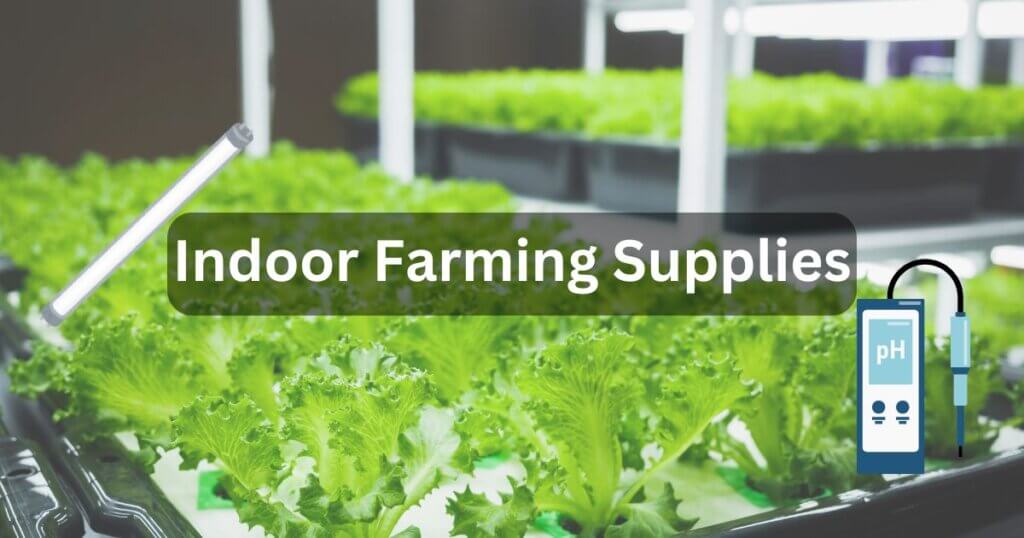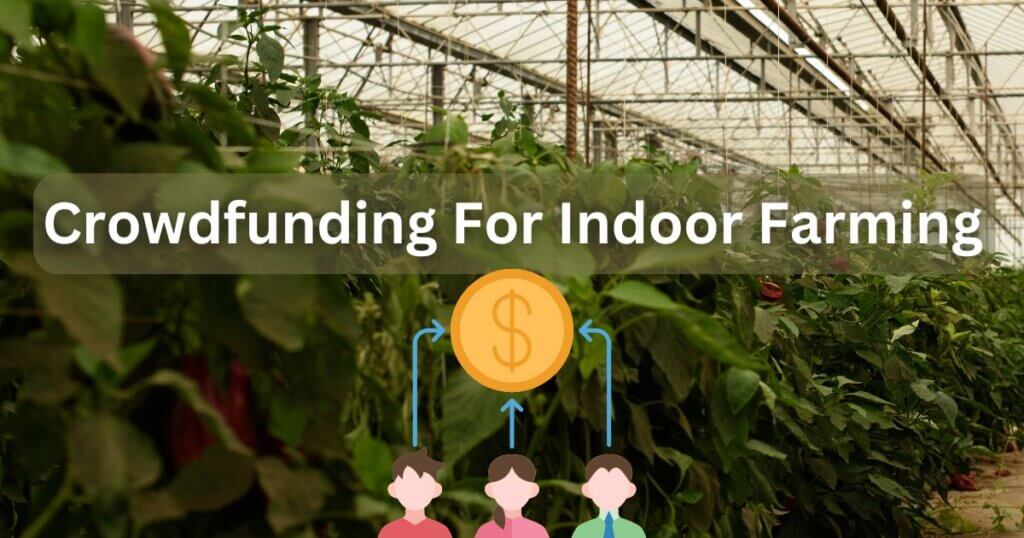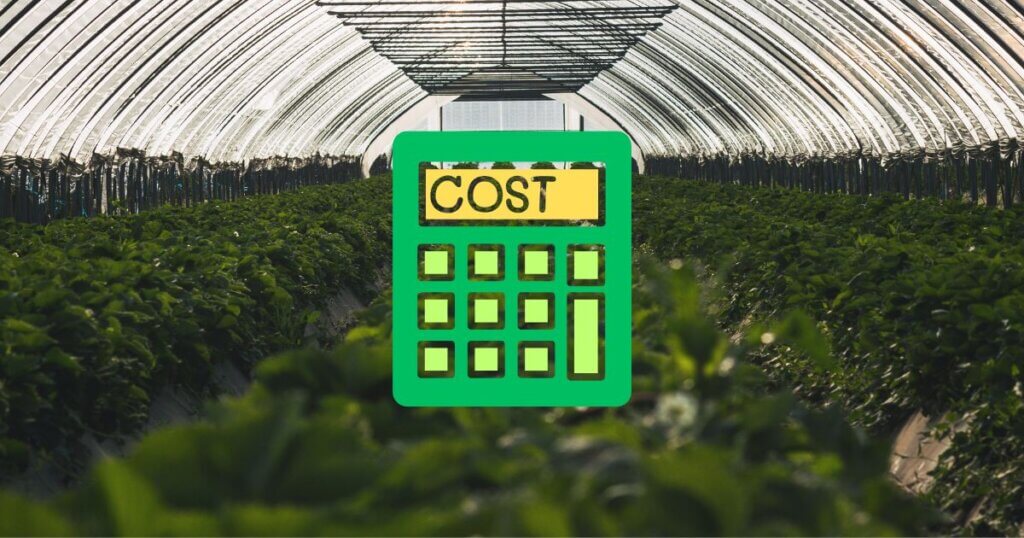Strategies for Selling Indoor Crops: Ultimate Boost Your Profits

Some of the links in this post are affiliate links. As an Amazon Associate, we earn a referral fee from qualifying purchases—at no extra cost to you.
Are you an indoor gardener looking to turn your passion into a profitable venture? Selling indoor crops can be lucrative, but it requires strategic planning and effective marketing. This comprehensive guide will explore proven strategies to boost your profits and establish a successful indoor crop-selling business. From optimizing your product selection to creating a compelling online presence, we will cover all the essential aspects to help you outrank your competitors and thrive in the market.
Table of Contents
Understanding the Indoor Crop Market
Indoor Crops: An Emerging Market with High Demand
The indoor crop market has witnessed tremendous growth in recent years with the increasing interest in sustainable living and the desire for fresh, homegrown produce. People are actively seeking ways to bring nature indoors and enjoy the benefits of year-round gardening. By tapping into this demand, you can position yourself as a provider of premium indoor crops and cater to a niche market hungry for greenery.
Identifying Profitable Indoor Crop Niches
To maximize your profits, it is crucial to identify and specialize in profitable indoor crop niches. Conduct thorough market research to understand the needs and preferences of your target audience. Consider factors such as rarity, aesthetics, and culinary uses when selecting the crops you want to focus on. By offering unique and sought-after varieties, you can establish yourself as a go-to source for specialized indoor crops, enabling you to command higher prices and attract dedicated customers.
Cultivating Quality Indoor Crops
Choosing the Right Indoor Crop Varieties
The success of your indoor crop-selling business relies heavily on the quality and appeal of your offerings. Selecting the right crop varieties that thrive indoors is paramount. Look for plants well-suited to controlled environments, such as herbs, microgreens, salad greens, and dwarf fruit trees. Consider factors such as growth rate, adaptability, and overall market demand to ensure you’re investing your time and resources in crops that are more likely to succeed.
An Indoor Herb Garden Starter Kit like this one provides a hands-on way to test high-demand crops like basil, parsley, and cilantro — ideal for both learning and selling.
Creating an Optimal Growing Environment
To produce high-quality indoor crops consistently, you must provide them with an optimal growing environment. This involves controlling factors like temperature, humidity, lighting, and ventilation. Invest in appropriate grow lights, consider using a hydroponic or aeroponic system, and monitor the moisture levels diligently. Maintaining a healthy and conducive environment for your plants will result in vigorous growth, vibrant colors, and flavorful produce that will entice customers and enhance your reputation.
Consider investing in an energy-efficient lighting solution like the ViparSpectra LED Grow Light, which features full-spectrum lighting and a built-in timer to support consistent, healthy plant growth indoors.
Implementing Sustainable and Organic Practices
With the growing emphasis on sustainability and organic products, incorporating eco-friendly practices into your indoor crop cultivation can give you a competitive edge. Explore organic fertilizers, pest control methods, and irrigation systems that minimize resource consumption and reduce the use of harmful chemicals. By adopting sustainable practices, you cater to environmentally conscious consumers and enhance the overall quality and health benefits of your indoor crops.
To support organic growing, try using a certified organic product like Dr. Earth All Purpose Fertilizer, which enhances plant health while maintaining sustainability.
Building an Online Presence
Crafting an Engaging Website
In today’s digital age, having a strong online presence is essential for any business. Start by creating a visually appealing and user-friendly website that showcases your indoor crops and offers a seamless browsing experience. Optimize your website’s loading speed, employ responsive design, and ensure intuitive navigation. Include high-resolution images, detailed product descriptions, and customer testimonials to build trust and persuade potential buyers.
Search Engine Optimization (SEO) for Maximum Visibility
Implementing effective SEO strategies is paramount to outranking your competitors and attracting organic traffic. Optimize your website content with relevant keywords, including our focus keyword, “selling indoor crops,” in a natural and user-friendly manner. Craft engaging meta titles and descriptions that compel users to click through from search engine result pages. Focus on obtaining backlinks from reputable websites in the gardening and horticulture niche to establish your website’s authority and boost its search engine rankings.
Leveraging Social Media Marketing
Harness the power of social media platforms to promote your indoor crop business and connect with potential customers. Identify the platforms where your target audience is most active, whether Instagram, Facebook, or Pinterest, and create engaging content showcasing your crops. Share visually appealing images, educational posts, and success stories to generate interest and build a loyal following. Collaborate with influencers and engage with your audience through comments, messages, and live videos to foster community and trust.
Offering Online Ordering and Delivery
To cater to the convenience-seeking customers of today:
- Offer online ordering and delivery services.
- Implement a user-friendly e-commerce system on your website that allows customers to browse, select, and purchase indoor crops effortlessly.
- Ensure secure payment gateways, provide detailed delivery options, and consider packaging your products in eco-friendly and visually appealing materials.
By offering a seamless online shopping experience, you can expand your customer base beyond your local area and tap into new markets.
For shipping, consider packaging your produce in eco-friendly kraft boxes that are not only sturdy but also align with sustainable business practices.
Establishing Local Partnerships
Collaborating with Garden Centers and Nurseries
Forge strategic partnerships with local garden centers and nurseries to expand your reach and tap into their established customer base. Offer to supply them with your high-quality indoor crops, providing them with unique products they may not have access to otherwise. In return, they can promote your business to their customers, increasing visibility and sales. Nurture these partnerships by providing exceptional customer service, timely deliveries, and tailored product recommendations.
Maintaining the right pH level is crucial for plant health, and tools like the Apera Instruments pH Meter make it easy to test and calibrate your nutrient solution accurately.
Participating in Farmers’ Markets and Events
Farmers’ markets and local events present excellent opportunities to showcase and sell your indoor crops directly to consumers. Rent a booth at farmers’ markets, community fairs, or gardening expos to engage with potential buyers face-to-face. Create visually appealing displays, offer product samples, and share your knowledge and expertise with attendees. These interactions allow you to build personal connections, receive direct feedback, and establish yourself as a trusted expert in the indoor crop industry.
A portable rolling display cart can enhance your presentation at farmers’ markets and make transporting your crops and supplies effortless.
Collaborating with Restaurants and Specialty Stores
Explore partnerships with restaurants, gourmet food stores, and specialty shops, emphasizing locally sourced produce. Position your indoor crops as premium, fresh ingredients that can elevate the culinary experience for their customers. Develop relationships with chefs and store owners, offering exclusive varieties and personalized service. By becoming a preferred supplier for these establishments, you can secure consistent orders and establish a reputation as a reliable source of top-quality indoor crops.
Conclusion
Selling indoor crops can be rewarding and profitable if you employ the right strategies. By understanding the market, cultivating quality crops, building an online presence, and establishing local partnerships, you can position yourself as a leader in the indoor crop industry. Embrace innovation, sustainability, and customer-centric approaches to differentiate yourself from the competition and maximize your profits. With dedication, passion, and strategic planning, you can turn your indoor gardening hobby into a thriving business that delights customers and brings nature indoors.
FAQs – Selling Indoor crops
1. Is it legal to sell indoor-grown crops from home?
The legality of selling indoor-grown crops depends on local regulations. You may need permits, food safety certifications, or business licenses, especially if selling edible crops. Check with your local agricultural or small business authority for compliance requirements.
2. How much startup capital is required for an indoor crop business?
Startup costs vary depending on the scale of your operation. A small setup with basic grow lights and containers can cost a few hundred dollars, while a larger hydroponic or aeroponic system may require several thousand dollars for equipment, seeds, and infrastructure.
3. What are the common challenges in growing indoor crops commercially?
Common challenges include pest and disease control, maintaining proper environmental conditions, managing energy costs for lighting and climate control, and competing with large-scale agricultural producers. Overcoming these requires strategic planning and efficient resource management.
4. Can I grow and sell exotic or rare indoor crops?
Yes, exotic and rare indoor crops such as saffron, wasabi, vanilla, and medicinal herbs can be lucrative. However, they often require specific growing conditions and longer growth cycles, so it’s important to research their feasibility before investing.
5. How can I scale my indoor crop business over time?
Scaling your business involves expanding growing space, diversifying crop selection, automating systems for efficiency, partnering with larger distributors, and investing in branding and marketing to reach a wider customer base.
Other Useful Resources Related To Selling Indoor Crops
- Indoor Farming Market Size, Share | CAGR of 10.9%
This comprehensive report provides an overview of the indoor farming market, including growth trends, market share, and projections. It offers valuable insights into the factors influencing the market and the adoption of various growing systems. - Indoor Farming 101 | Pure Greens Container Farms
This article introduces the basics of indoor farming, covering different cultivation methods such as hydroponics and aeroponics. It also discusses the advantages of indoor farming, including space efficiency and year-round production. - Indoor Farming: Sustainable Agriculture’s Future | Eden Green
This resource explores the role of indoor farming in sustainable agriculture, highlighting its potential to address challenges like climate change and water scarcity. It emphasizes the benefits of vertical farming and hydroponics in creating a sustainable food system. - Indoor Farming: The Future of Agriculture – Bowery
This article discusses the advantages of indoor farming over traditional methods, including space efficiency and the ability to grow a variety of crops in urban settings. It also touches on the potential for indoor farming to meet the food demands of a growing global population. - Hydroponic Gardening Is the Key to Year-Round Indoor Growing-How to Do It Like a Pro
This guide delves into hydroponic gardening, explaining how it allows for soil-free cultivation of plants indoors. It covers the basics of setting up a hydroponic system and the types of crops suitable for this method.
Some Interesting Selling Indoor Crops Videos










